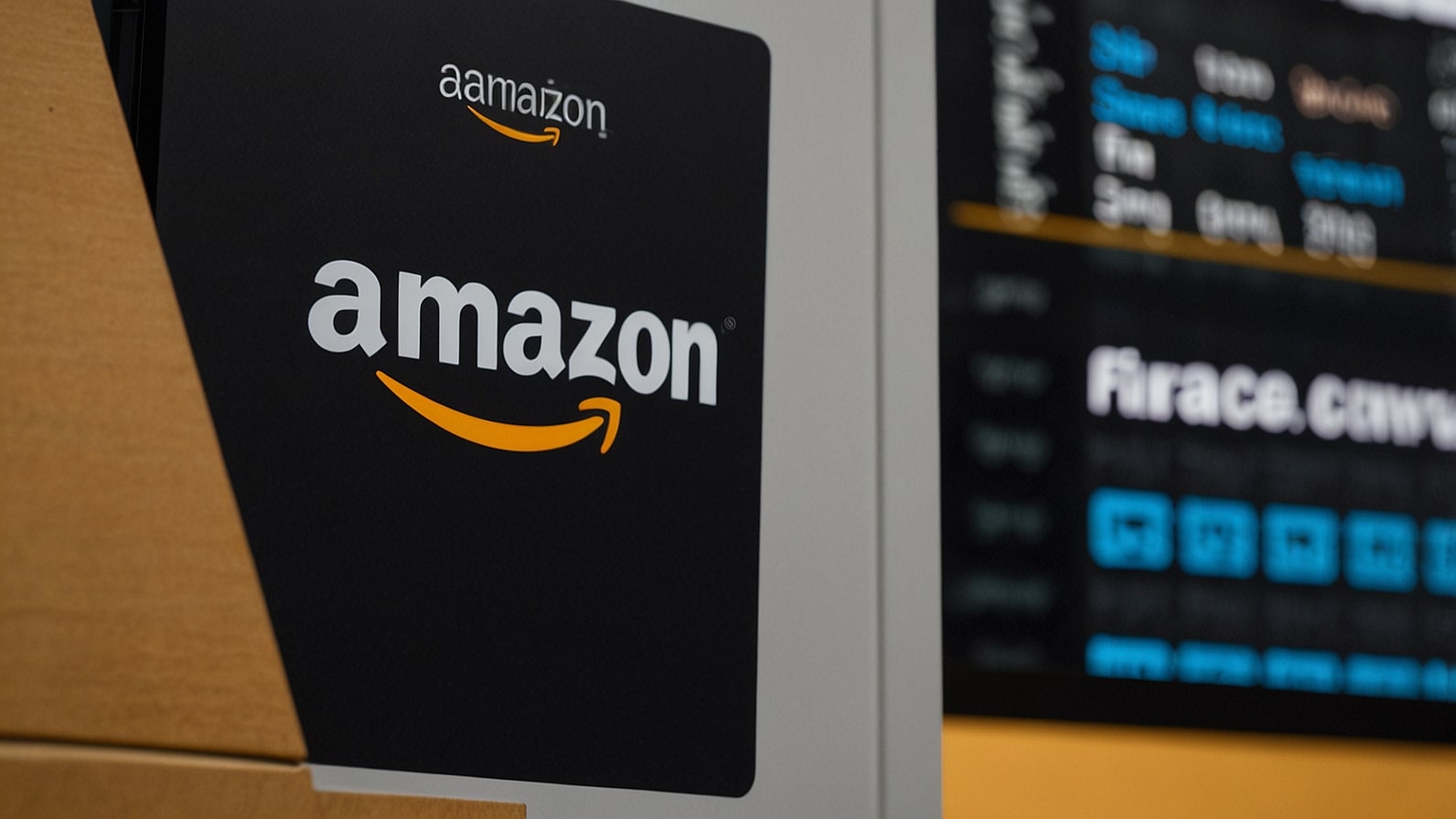The e-commerce giant Amazon.com Inc. of New York gave a shock to the Nasdaq today, launching shares over 5% to close at 3,456.78 U.S. dollars, highlighting a blowout third-quarter 2025 earnings report that shattered Wall Street expectations in the face of insatiable AI investments and holiday rush.
The run-up crowned a tumultuous day of technology, as the trade volume increased to 85 million shares, more than three months of average, with algorithmic traders and institutional funds trading the growth story of the retail and cloud powerhouse. This pop valuably contributed to the market capitalisation of Amazon by 200 billion dollars, propelling it into the 3.5 trillion membership of the club of the Magnificent Seven and intensifying the power of the Magnificent Seven.
Their financials were a diversification and execution master class. Amazon recorded a solid net sale of 198.2 billion dollars in the quarter ending at September 30, with year-over-year growth of 12% that compared with the 193.5 billion dollar consensus. Its crown jewel, Amazon Web Services, grew to 28 billion dollars in revenue, 19%, and 1.5 billion above expectations, through the hyperscaler demand of generative AI workloads.
CEO Andy Jassy demonstrated a 40% surge in AI instances of compute, as well as customers, such as OpenAI and Anthropic, scaling deployments on custom silicon. The e-commerce sales in North America increased by 11% to 95 billion dollars, boosted by Prime Day sales extensions and expedited delivery of products by drone pilots, and the international divisions rose by 14% to 45 billion on an increase of market share in Europe.
The cash cow (which is often neglected) used to be advertising, which brought 15.2 billion dollars, which is 22% higher due to sponsored products and streaming integrations in Prime Video. The operating income shot up to 18.4 billion dollars compared to 11.2 billion a year back, and the margins shot up to 9.3% due to the cost-cutting at fulfilment centres and 10% reduction in the number of employees in the first part of the year.
Net earnings reached 14.7 billion dollars, and provided diluted EPS of 1.45 dollars, which is much higher than the whisper of 1.18 dollars. The free cash flow increased to 62 billion dollars to date, giving it plenty of dry powder to meet the increased capital expenditure guidance of 125 billion dollars by 2025, much of which is AI data centres and automation of logistics.
The tone of the earnings call by Jassy was very confident, as it has positioned AWS as an unsurpassed moat in the AI arms race. He claimed, introducing Project Amelia, an AI agent software suite to sellers that could automate 30% of listings to third parties: We are not just cloud providers, we are the backbone of the intelligence economy.
The management has reiterated that it will grow its sales by a full year and increase its projections of AWS’s operating income, indicating that the capital expenditure spurt would not end with regulatory investigations being conducted by antitrust regulators. There was strong holiday cheer, early Black Friday previews, which forecasted an increase in sales of 15% by AI-personalised recommendations and same-day delivery in 80% of U.S. metros.
It prompted analysts to applaud, with JPMorgan raising its price target to 3,800 dollars on 25% cloud expansion by 2027 and Goldman Sachs to 3,650 dollars due to the tariff-proof supply chain afforded by e-commerce via the India and Mexico hubs. Amazon trades at a premium to Walmart but at a discount to pure-play cloud companies such as Snowflake, which is a reflection of its three engines of revenue.
The rally cascaded across consumer and technological peers, with the Nasdaq Composite increasing by 1.1 per cent to a new high of 20,145 points, and the S&P 500 increasing by 0.7 per cent to 6,278. Wider indices enjoyed the effect of cooling PCE inflation figures, yet Amazon shone over energy brakes due to weaker crude.
This will not be the inaugural earnings ride of Amazon, though it comes at an opportune point. The company has dropped its legacy inefficiencies as it enters the high-margin AI and advertising industries after the pandemic, struggling with labour strikes and geopolitical tariffs. Other strategic bets, such as the 4 billion Anthropic investment, are paying off, with AWS winning 32% of the U.S. market share according to Synergy Research.
Q4 outlook forecasts 20 billion dollars of AWS reservations through enterprise AI migrations, and the ad level changeover of Prime Video to 50 million subscribers. To the festive sprint, the robot sorters and electric fleets are offered to guarantee the presence of the margin tailwinds, which may save the logistics costs by 2 billion dollars.
Shareholders of the U.S. are consuming the Amazon story: a tower balance sheet containing 95 billion dollars of cash, aggressive stock buybacks burning 50 billion dollars a year and no dividend to attract yield chasers.
The flow tilted towards the positives as call volume was three times greater than puts, as implied volatility fell to less than 25%. M&A speculations continue to exist, with the target being health tech since One Medical’s integration, but Jassy dismissed the rumours, focusing on organic dominance.
With All Saints’ Day just around the corner and Cyber Monday coming into view, the future of retail is redefined in the alchemy of bits and bricks at Amazon. As AI capex cycles pick up and e-commerce penetration approaches a quarter of U.S. GDP, shares are likely to challenge $3,600 at the end of the quarter.
In the thirsty market of secular growers, the call of Amazon Q3 symphony beats revenue and visionary spending takes a bull note, making those who hold it faithfully in the centre of the American innovation epicentre deafeningly rich.
